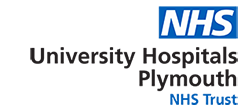The Radiotherapy Pathway: Pre-Treatment
Consultation
Before commencing radiotherapy treatment, you may have an appointment with the doctor, and in some case with a specialist nurse, to discuss your treatment options. This is where you will be consented for your Radiotherapy treatment.
CT Planning Scan
On receipt of your referral form from your doctor we will phone you with an appointment to attend for a CT planning scan. This scan will be used to plan your radiotherapy treatment and is not used for diagnostic purposes. All patients having external beam radiotherapy will need to have a CT scan in the position they will be in for all the radiotherapy treatments, so it is important you are comfortable. Our large bore CT scanner is specially designed to allow us to take 3D and 4D scans with our patients in the best position for them to receive their radiotherapy treatment. It may be necessary for you to have an injection of contrast media at your CT scan. This will be fully explained at the CT appointment, if applicable to you.
Some patients will need to have an immobilisation device made. This is to ensure you are in the same position that you will be in for your CT scan and for each of your radiotherapy treatments. For sites such as lung and limb, a vacuum-formed bean bag may be used, whilst for other sites such as breast or prostate, our adjustable site-specific equipment is sufficient. If you are having radiotherapy to the head and/or neck then you may need to have a mask made. These are custom made for each patient and will conform precisely to your shape. This mask will be made at your CT planning scan appointment.
Mask's - Depending on the treatment you are having, you will either have a small mask (that covers the head only) or a large mask (that covers the head, neck and shoulders). They are both made in the same way:
- The radiographers will first get you to lie on the CT scanner couch and get you in a comfortable but stable position. We will choose a head pad that is supportive for your head and neck and like the mask this will then stay with you throughout your treatment.
- The mask starts as a hard sheet of plastic supported by a frame, once it has been put into a warm water bath it becomes malleable.
- Once malleable the mask will be draped and stretched over you, it will feel warm and damp. The mask will be gently moulded around your features as it cools. It will require about 15 minutes to cool down and harden completely. During this process try to remain still and breathe normally.
- Sometimes the doctor will request that you be administered contrast dye to allow the blood vessels to show up more clearly on the CT scan. In this case after the mask has hardened the radiographers will remove the mask. One of the radiographers will insert a cannula in preparation for the contrast. If you require this it will be discussed with you. Then the radiographers will then reposition you on the couch and place your mask back on.
- If you do not require contrast the mask will remain secured until the CT scan has been completed. It will be secured to the bed by clips on the frame. We can unclip the mask quickly so please do not panic.
- Some marks will be drawn on the mask to aid the radiographers in getting you in the correct position when you come back for your radiotherapy treatment.
- They will then proceed with the scan. If contrast was requested, they will administer the contrast.
- This entire planning session takes about 1-2 hours depending if you require contrast or not.
Tattoo dots - To help reproduce your position for the treatment, we may make one or more permanent ink dots (tattoos) to use as reference points.
- Before the scan some pen marks will be drawn on your skin with permanent marker and some small ball bearinngs will be placed on your skin, these will act as markers for the scan. After the planning CT scan the ball bearings will be removed and will be replaced by small permanenet tattoo dots. These are made by placing a small amount of black ink on the skin surface and by using a small needle a bit of ink is taken underneath the skin.
- The tattoo dots are no bigger than a freckle but they will be black and they will be permanent. If you have any concerns regarding this then please raise it with your doctor or one of the radiographers.
You will usually receive your first treatment appointment at the time of your CT scan. If this has not yet been booked at this time we will call you to inform you of this date. You will receive a full list of all your treatment appointments on your first day of treatment. Your treatment times may vary.
Planning
Our dosimetrists use advanced planning systems to accurately plan the radiotherapy treatments. The planning team routinely plan advanced treatments such as Intensity-Modulated Radiotherapy (IMRT), Volumetric Modulated Arc Therapy (VMAT), Stereotactic Radiosurgery (SRS) and Stereotactic Ablative Radiotherapy (SABR).
Once the plan is complete a series of checks are carried out before it is ready to be used for radiotherapy treatment. Due to the specific nature of each plan this process can take between 1-5 weeks depending on the type of treatment.
Liaison
Within the week before starting your treatment you will receive a telephone call from our liaison team to go through a start of treatment review. During this telephone call a radiographer will discuss your upcoming treatment with you, including the treatment process, as well as going through any concerns or queries. The side-effects of radiotherapy will vary from person-to-person and will depend on the area of your body that is being treated. Once you have had your start of treatment review you will then be ready for your radiotherapy treatment.
The liaison area is where you will have radiographer, doctor, speech and language and dietitian reviews to help you cope with the treatment. These appointments may be routine or they may be arranged as required.


